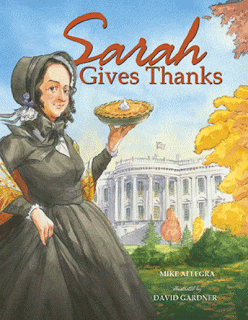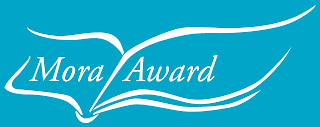For the second year, I’m honored to interview the winner of the Estela and Raúl Mora Award on my blog. Congratulations, Tina Bixby and Amelia Martinez, to you and the Lynden Public Library, a branch library of the Whatcom County Library System, WA. I was inspired by every application I read, but I don’t select the winner nor the Honor Awards started this year. Libraries all over the country are curious to know what you did that prompted the REFORMA Mora Award Committee to select your library as the 2012 winner. Deep thanks for designing an April Día celebration that teaches us all that by involving community members in planning the event, together you created a memorable community celebration.
Tell us a bit about yourselves and your library.
Tina: I am from Washington State and have been a librarian for 27 years, mostly working as a children’s librarian. The Lynden Library, where I currently work, is located in northwest Washington State, very near the Canadian border, in a beautiful agricultural area. The Lynden Library is the largest branch in the Whatcom County Library System, serving a community of 11,951, with an almost 9% Latino population.
Amelia: I was born in Mexico and came to U.S. in 1996. I started working for WCLS in June, 2010 as a Public Service Assistant for the Lynden Library. I love helping and working with families and children! I also like learning and sharing new things and participate in events that bring joy to people.
 |
| L to R: Alma Hernandez, Amelia Martinez, Tina Bixby, Sandra Ramirez, Brenda Ramirezion |
1. How did you first become interested in Día and how long ago was that?
Tina: Our first Día celebration began 5 years ago as a monthly children’s program. Our system Children’s Services Department arranged for a local Latino elementary school secretary to volunteer to read a couple of books and do a traditional Mexican craft. The dozen, almost entirely Anglo participants enjoyed the program. The following year was much the same. The summer before our third Día, the Lynden Library hired Amelia Martinez, a Spanish speaking Public Service Assistant. Her presence, language skills and community connections, as well as library outreach to the Migrant Head Start program made a big difference. The first time I met Amelia, I knew that we had to hire her!
Amelia: It was in the summer of 2010. I was working for Washington State Migrant Council and Tina worked for the Library. She was coming to do “story time” at the Head Start. One day, she asked me what kind of children’s celebrations we had in México, we talked about “Día del Niño,” and she told me about her idea. I got very excited and volunteered to help. This is a very special celebration in Mexico, especially in schools. I remember that it didn’t matter if we were poor or rich or if had good grades or not; that day each teacher created a wonderful, fun day for all the students. We had food, games, piñatas, candies, crafts, music, talent shows, plays, and time to share with the whole school, older siblings, friends, etc. It is a very nice memory of my childhood, and it was all about learning.
2. When did you begin to plan your 2012 celebration? Did you work with a team and, if so, who created the team? Was having a team helpful? Challenging?
Tina: Amelia was really the heart of our Día celebration. Familiar with Latino parties, she knew exactly what was needed to attract the Latino crowd that we were hoping to draw in and make the children feel very special. A cake and a piñata were essential! I worked more on the fundraising, shopping and administration side of the planning.
Amelia: We started planning it in September 2011. We were working on another program “Family Literacy Fiestas,” and we talked to the participants about our next program (Día). They all got very interested and excited talking about their own experiences. We asked them if they would like to participate and most of them said, “YES.” We have a very nice group of Latino high school students who come to help us at different events, so they came too. And when the time got closer, we started inviting other patrons, and most of them wanted to help! Having a team was WONDERFUL!
During the planning, it was a little bit challenging because of our budget, and because we were sometimes planning this during working hours. All our co-workers were great, asking how things were going, covering desk time when we needed to make phone calls or talk to volunteers, etc.
This was the other challenge; we couldn’t have all the volunteers present in our planning meetings – some were students, mothers, workers, childcare providers, etc. Everybody had different schedules, so we had to divide the work into sections – set up, crafts, learning activities, games and entertainment, kitchen, etc.
At the end, it was a lot easier than we expected, because everybody knew what they were doing; they met each other and worked as a team instantly. We all had our hearts in the event. We were happy, even when the piñata rope kept breaking because it was overloaded with candies. All dads helped.
It was WONDERFUL having everybody helping, feeling that this was their event!
3. What do you think made your 2012 celebration special?
Tina: The community involvement – Día was a celebration created by the Latino community to celebrate children and books.
Amelia: Everything, the sponsors, the Library, the volunteers, the participants, the “purpose.”
4. How do you and your library feel about winning the Mora Award?
Tina: Elated! We never thought we would win the award, but we knew we had to share our success story with REFORMA and Pat Mora.
Amelia: We are all surprised and excited. It is a wonderful and encouraging feeling to continue programs like this one—connecting with people.
5. What did you learn from your celebration this year?
Tina: The amazing things that can happen when you move away from “doing for others” into developing two-way relationships. We have learned to look to the strengths and resources in the Lynden Latino community to create services, programs and library collections that support diversity and families.
Amelia: The importance of “sharing the opportunity of giving” and “connecting with others no matter our racial or social status”. A lot of families gave us different ideas for next year, and they would like to help as well. Children were excited to see their parents interacting with other people they barely met and sharing something good about their culture.
6. What three key pieces of advice would you give to those ready to plan their first Día celebration in spring 2013? Advice to those who have celebrated before?
Tina: Be flexible, allow the program to evolve, nurture relationships
Amelia: To do it from your heart.
To listen to others’ suggestions.
Allow people to help.
7. Why are Día and sharing bookjoy important to you?
Tina: Día is all about books, children and fostering literacy – my passions in life. When children and families really know the joy of sharing books, I know that those children will succeed in life. At our Family Fiesta Literacy program in the library last week, I was playing and reading with the kids while Amelia instructed the adults. I overheard one little boy say to another “Este lugar es muy divertido, no? Muy cool, no?” At the end of a very long day of work, it was exactly what I needed to hear – they filled my day with joy! Bookjoy!
Amelia: Because it connects joy with reading and learning. We would like all families to find reading and learning as positive and happy experiences.









